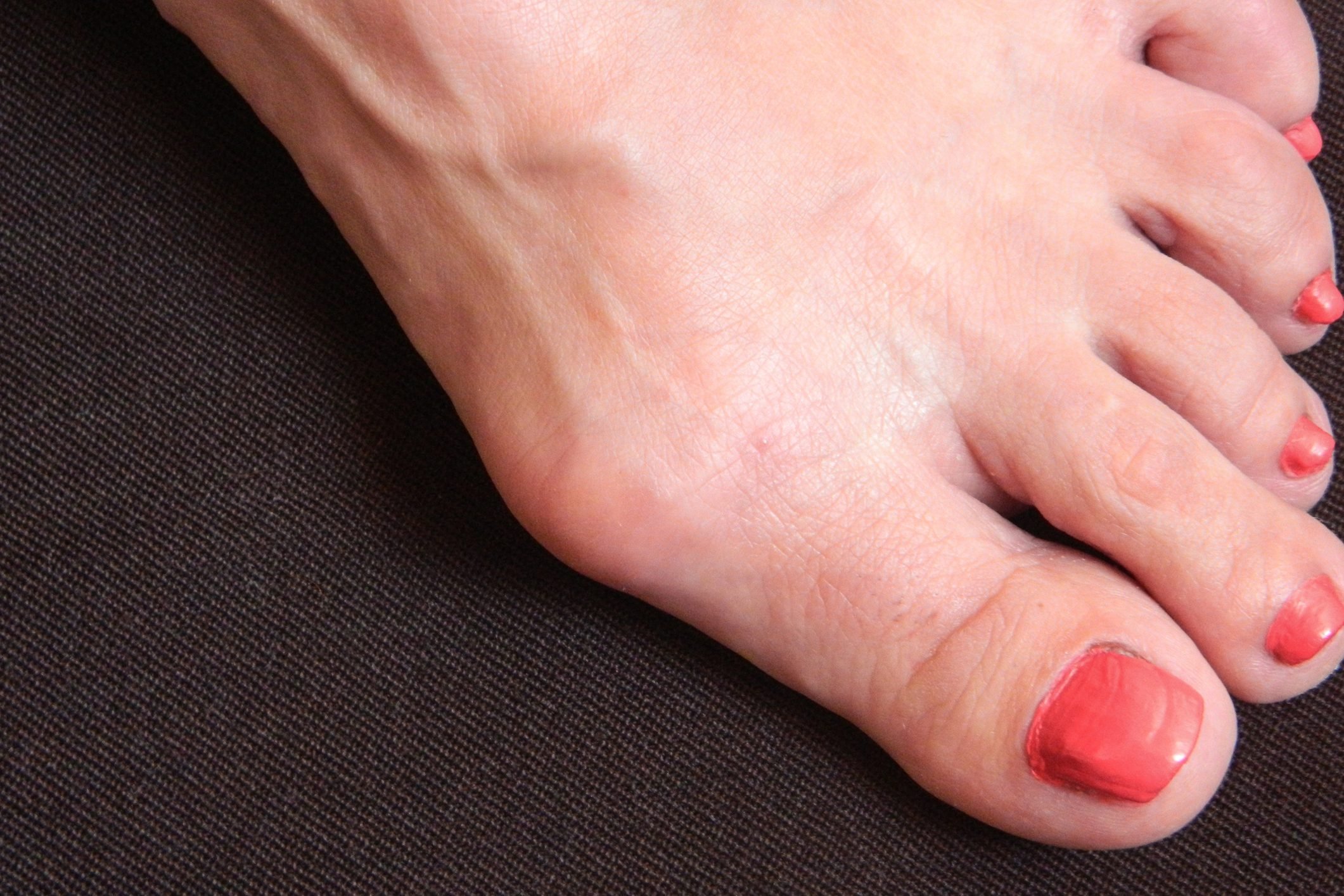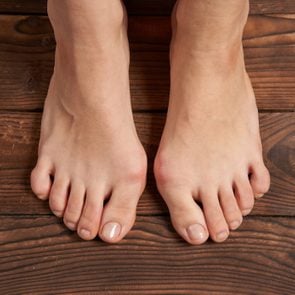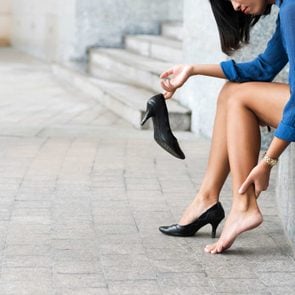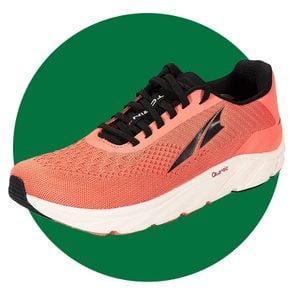The 5 Types of Bunions: What Podiatrists Need You to Know
Updated: May 07, 2021
That big bump on the side of your foot? It's a bunion—a common foot problem that can be painful. The good news is that you might be able to treat it at home and avoid surgery.
Toe troubles
We rely on our feet for so much, it’s no wonder foot problems are so common. All that getting us from place to place while carrying our body’s weight, especially in shoes that may look good but don’t feel good, can put a lot of pressure on our feet.
A third of American adults have experienced a foot problem known as a bunion, or hallux valgus. If the bone on the inner side of the base of your big toe looks like it’s jutting out and your big toe is pointed in, that’s a bunion.
Here’s what you need to know about tailor’s bunions and other common bunions—and how they’re treated.
What is a bunion?
A bunion looks like a bump that forms at the joint at the base of the big toe. A tailor’s bunion—or bunionette—on the other hand, forms on the outside of the little toe.
“Bunions are the result of poor mechanics that lead to an abnormal pull in the muscles and tendons that can change the position of the joints, particularly at the first metatarsophalangeal (MPJ) joint,” says Grace Torres-Hodges, DPM, in Pensacola, Florida, and a spokesperson for the American Podiatric Medical Association. The first MPJ is the joint at the base of your big toe.
“Over time, it can make the joint unstable, cause the great toe, or hallux, to drift and rotate, and ultimately result in a deformity that puts abnormal pressure on the foot,” she says.
How do you know if you have a bunion?
“You typically will notice a bump on the side of your big toe that can cause swelling, redness, and pain,” Dr. Torres-Hodges says. “The condition is worse with shoes on or after activities that require a lot of standing, walking, or running.”
(These are the best shoes for bunions.)
What causes bunions to develop?
Perhaps not surprisingly, high heels and narrow toed-shoes are often the initial culprits, which could also be why women tend to get bunions more often than men. But, there may be genetic risk factors that may make some people more likely to develop bunions.
“The foot type and shape—both inherited traits—and biomechanics—the movement and pull of the muscles and tendons on the joints—are the underlying criteria,” Dr. Torres-Hodges says. “But shoes, activity, injury, and age can influence why someone will develop a bunion and have bunion pain.”
People with flat feet, for example, may be more at risk. If you have close family members who’ve developed bunions, you may be more likely to as well.
Although it is often older people who get bunions, bad shoe habits earlier in life may contribute to the problem later.
In one 2016 survey of more than 2,600 women published in The Journals of Gerontology, those who wore constrictive footwear, including high heels and narrow shoes, at younger ages (20-39) were more likely to have bunions later on than those that didn’t. Meanwhile, less than 10 percent of women over 40 in the study were still wearing high heels and shoes with narrow toes.

The different types of bunions
Types of bunions are mainly organized by where they are located and how bad they are. If they’re at the big toe, they’re just called bunions, Dr. Torres-Hodges says.
“As for severity, in addition to symptoms of pain, bunions are can be classified by looking at the X-rays to evaluate,” she says. “First, the joint position at the first MPJ; second, the position of that joint with respect to the sesamoids, two little bones that sit under the first metatarsal; and third, the intermetatarsal angle, the gap between the first and second metatarsal.”
So, the more the bone angles out from your foot (hallux valgus angle, or HVA), and the more your big toe angles toward your middle toe (intermetatarsal angle, or IMA), the worse the bunion is. Normal angles are an HVA of less than 15 degrees and an IMA of less than nine degrees. The angles often used to classify bunions are:
Mild: HVA less than 20 degrees / IMA 9 to 11 degrees
Moderate: HVA 20 to 40 degrees / IMA 11 to 16 degrees
Severe: HVA over 40 degrees / IMA over 16 degrees
Large bunion
A severe bunion can cause the joint at the base of your big toe to angle so much that the bony bump appears very large. In addition, your big toe might even overlap your middle toe. Large bunions will also likely cause increasing pain and difficulty getting your foot into shoes.
Because the condition is progressive, if you think you have a bunion you should see a doctor before it gets any worse. Bigger bunions are harder to treat and are more likely to require surgery.
Bunion with skin irritation
Sometimes, bunions can cause problems on the outside of the foot as well as inside. As the misshapen foot rubs against shoes, the friction can cause skin irritation to develop, and the area may become red, raw, and painful.
Sometimes, there is also a painful callus, Dr. Torres-Hodges says. The big toe touching the middle toe can also cause skin problems as well, as the two digits chafe against each other.
Bunion with hallux limitus
Hallux limitus, and its more serious cousin, hallux rigidus, are separate biomechanical problems in which the big toe joint becomes stiff due to arthritis. A bone spur may appear on the top of the foot by the big toe, which although it looks similar is not actually a bunion. However, big toe arthritis can occur in the presence of a bunion as well.
Bunions may also contribute to arthritis if the joint cartilage becomes damaged from the bones rubbing together improperly. That’s why it’s important to see a doctor for a bunion as soon as possible.
“To really avoid further deterioration in the feet, a visit to the podiatrist is recommended,” Dr. Torres-Hodges says.
Bunionettes—a.k.a. Tailor’s bunion
“If we see them on the fifth MPJ, the little toe, we call them bunionettes, or tailor’s bunion—a name reminiscent of the wear down of the shoes from the [cross-legged position] tailors used to sew,” Dr. Torres-Hodges says.
You may develop a callus or corn on the bump. And even though it’s just your little toe, that tiny bone can have an effect on how you walk and cause pain on the outer side of your foot. These types of bunions are less common than the ones on the big toe, but they’re treated similarly.
Pediatric/adolescent bunions
This rarer type of bunion affects children and young adults, most typically girls from 10 to 15. It definitely has a genetic component, according to the American Academy of Orthopaedic Surgeons. These bunions may be associated with greater movement and less pain than the adult sort.
“There are also pediatric bunions which are noted in children’s feet, and are the result of an inherited foot type with the poor mechanics passed down from their parents,” Dr. Torres-Hodges says. Doctors usually look to non-surgical treatment options for pediatric patients.
Lifestyle and home remedies for bunions
For all types of bunions, in many cases treatment is non-invasive—but it will likely involve switching up your footwear—check out the best shoes for bunions.
“If you don’t get rid of the irritation, you can’t get rid of the inflammation, and it is the irritation to the joint that is causing the swelling and pain,” Dr. Torres-Hodges says. “Look at the shoes you are wearing and try to wear a wide and deep toe box, avoid narrow or pointed tip shoes, including heels which emphasize pressure at the ball of the foot.”
Wearing more sensible shoes can help prevent your bunion from getting worse—or prevent one in the future.
Your doctor may also advise you to take NSAIDs (non-steroidal anti-inflammatory drugs), such as ibuprofen, to reduce inflammation. You can also try applying ice to your bunion, and avoid standing for too long if possible.
The goal of nonsurgical treatment isn’t to fix the deformity, but to keep it from getting worse, as well as to reduce the pain so you’ll be able to resume normal activity.
Bunion treatment products
In addition, you can try over-the-counter products that can help relieve bunion pain without surgery, such as pads to cushion your bunion or bunion correctors.
“If the toes have shifted, a toe spacer will sometimes help toes that seem to touch or overlap,” Dr. Torres-Hodges says. “Toe socks also can assist.”
These have individual “toes” for each digit, like gloves for your foot, so toes can spread out and align better.
Your podiatrist may also recommend some special foot products.
“Once we can determine the mechanics of the foot and determine the position of the joints, we can control that with devices such as orthotics,” Dr. Torres Hodges says. These shoe inserts can be custom-made or purchased ready-made at a store.
Medical treatments and surgery
Depending on the severity of your bunion and how it responds to lifestyle changes and management, additional medical treatment might be necessary.
Your doctor may suggest corticosteroid injections, or even physical therapy to strengthen the surrounding muscles to reduce pain, according to the journal of Orthopadeic & Sports Physical Therapy.
For severe and painful bunions that aren’t getting better, surgery is offered as a last resort—but isn’t done for cosmetic reasons alone.
“Surgical intervention may also be recommended once conservative measures have failed, but a proper evaluation is needed to determine the correct surgical procedure because not all bunions are treated with the same surgery,” Dr. Torres-Hodges says. “There are both traditional open bunion procedures as well as MIS, minimally invasive surgery, procedures that may be discussed and recommended.”
Depending on your specific bunion, surgery may aim to realign the bones, fix the surrounding ligaments and tendons, and/or remove the bump. Often the surgery is done under regional anesthesia only, with patients going home the same day.
But, full recovery can take quite a long time—up to six months. And even afterward, you won’t be able to wear constrictive footwear without the risk of your bunion returning.
When to see a doctor
Chances are, if you have a bunion you’ll have to see a doctor sooner or later—but sooner is better.
“What typically brings in a patient to see me is pain,” Dr. Torres-Hodges says.
Getting around may become very uncomfortable, and may affect your daily living. In one 2017 study of more than 1,800 people published in the journal Rheumatology International, those with bunions had reduced quality of life and function, and more foot pain and disability.
Doctors can often diagnose bunions just by looking at them, but X-rays may be taken to see how bad the bunion is, what joint damage has occurred, and exactly to what degree the bones have shifted.
What happens if you don’t treat bunions
If you don’t treat bunions, more problems could follow—for your feet but also elsewhere on your body.
“If you think of it like a car, if the alignment is off, although the foot may function, over time it wears down,” Dr. Torres-Hodges says. “Unfortunately, not only does the foot wear down by putting pressure at the big toe joint, but when it begins to hurt, you instinctively begin to compensate elsewhere.”
Dr. Torres-Hodges explains that this can lead to ball of the foot pain, hammertoes, tendonitis, joint instability, and gait problems, which can lead to greater foot pain and overall body pain.
You may also develop other foot complications including bursitis, in which cushions for bones near the joints called bursa become inflamed.
The last word
Though you may have a genetic predisposition for bunions, wearing shoes with low heels and wider toes is the best way to prevent them from forming. If you think you may have a bunion, contact your doctor to get prompt treatment to keep it from getting worse.
Next, check out this bunion pain relief guide for more tips.



